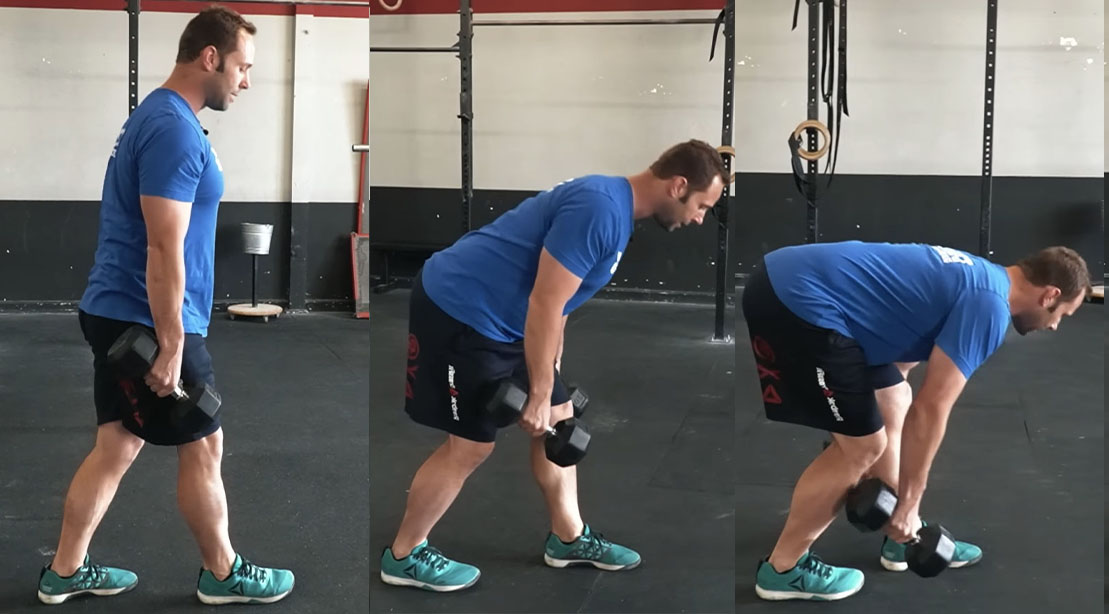When lunges are in your workout program, a sense of dread comes over you. No matter the variation, the lack of stability, the testing of balance, and the raising of the heart rate is NOT something that you look forward to. Lunges are like bad-tasting medicines that make you feel better, and this is no different for the death march lunges; it tastes bad going down, but you know it will work.
Lunges don’t tickle, but strengthening imbalances between sides and improved muscular development almost makes them worth it. But then there are walking lunges, which take it up a notch. It’s a mix of muscular and cardiovascular, which may have you hating life quickly.
Then there is death march lunges. Even the name is ominous. It combines a weighted walking lunge and Romanian deadlift and will light your glutes and hamstrings up like never before. Jason Mulvaney, owner of Ascension Athletics and personal trainer with over 10 years of experience training athletes from powerlifters to golfers, introduces you to this challenging lunge variation.
Walking Lunge Lowdown
“Walking lunges are probably one of the best leg exercises, in my opinion, because there is almost no cheating when performing them,” explains Mulvaney. “If done correctly, they work every muscle in the lower body. They are great for all aspects of fitness, too. Hardcore lifters, sprinters for the triple extension (extension of the ankle, knee, and hip), the general population, and even bodybuilders will all see benefits.”
Furthermore, you’ll double the reps you usually do for bilateral lower-body exercises because you train each leg individually. Lunges automatically throw your body off balance because lifting in a single-leg fashion increases the number of stabilizing muscles needed to remain upright, including your core.
Performing unilateral exercises like walking lunges helps reduce muscle imbalances and improves muscle development between sides, which enhances your overall strength numbers.
There’s a lot to like about walking lunges, except for the fact of doing them.
Death March Lunges VS. Walking Lunges
“Walking lunges are great, but everyone could use a little extra love in the posterior chain. The “Death March” takes all of the knee flexion out of the equation and puts almost all the tension in the hamstrings and glutes,” says Mulvaney.
Due to the tiling forward, which happens with almost all hinge variations, the Death March strengthens the lower back muscles along with strengthening hamstring and glute imbalances between sides. Don’t worry; the Death March isn’t going to put you in the ground; just lying on top of it to catch your breath.
Death March Lunge Form Tips
Mulvaney suggests gripping a few light dumbbells or kettlebells, taking a small step, and pushing the front hip back until you feel a stretch in the hamstring. Instead of lifting up once you feel the stretch in the hamstring, think of pushing your hip down and forward to come up from the hip hinge.
When performing walking lunge variations, there is a tendency to ‘hurry’ the exercise to get it over and done with. But by doing this with the Death March, you’ll lose the tension benefits in your hips and hamstrings. Instead, why don’t you enjoy burning your lungs, hips, and hamstrings?
It was said by no lifter ever.
Set and Reps Suggestions
Mulvaney prefers to set a length and go a distance for the Death March. When starting, use three sets of 25 yards to build work capacity. The alternating hip hinge allows each leg to get a small rest, enabling you to enhance your work capacity by going longer. When 25 yards is no longer a challenge, try sets of 40 yards or more.
